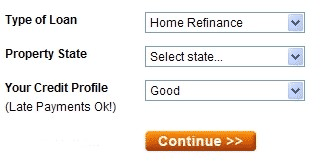Blended Rate Calculated Using Easy Formula

Blended rate calculations can be done easily without the need for an online calculator with a simple formula. I will show you how in this quick tutorial.
Blended Rate Formula Calculation
This calculation is needed when using two mortgages at two different annual interest rates. We often want to compare using a single mortgage to achieve our goal against using two loans. This is where knowing the blended rate comes in handy.
Note: Read Our Top Five Mortgage Complaints!
Using two loans to finance a home purchase has other advantages like the avoidance of mortgage insurance when structured as 80-10-10 (the 80 represents the first mortgage loan-to-value, the next 10 represents the second mortgage loan-to-value, and the last 10 represents the buyers down payment) or 80-15-5. These are typical current day structures using two mortgages.
However, before the meltdown, another common structure was the 80-20. This was a common structure to finance 100% of the purchase price…commonly known as “Zero Down” financing. This is no longer possible as all lenders require borrowers to have some form of down payment these days.
Okay…back to the calculation.
The formula is simple:
We need to calculate the weighted rate of the first mortgage combined with the weighted rate of the second mortgage.
This is represented in the formula as:
((W1 x R1) + (W2 x R2)) = Blended Rate
W1 is the weighted first mortgage or what percentage of the total financed amount belongs to the first mortgage in numerical form.
R1 is the note rate associated with the first mortgage
W2 is the weighted second mortgage or what percentage of the total financed amount belongs to the second mortgage in numerical form.
R2 is the note rate associated with the second mortgage.
For example, let us take the purchase of any house using an 80-10-10 structure withe a first mortgage rate of 6.25% and a second mortgage rate of 8.0%.
W1 = 80% LTV of a total of 90% financed in numerical form = 80/90 = 0.89.
R1 = 6.25
W2 = 10% LTV of a total of 90% financed in numerical form = 10/90 = 0.11
R2 = 8.0
Note: W1 + W2 must always equal 1.00 or 100% of the amount financed
With those weights calculated our formula now looks like this:
((.89 x 6.25) + (.11 x 8.0)) = Blended Rate
(5.5625 + .88) = Blended Rate
6.4425% = Blended Rate
So in this example the annual blended rate is rounded to 6.44%.
Knowing how to do this simple blended rate calculation using this formula, you could compare a single mortgage loan rate to this “two mortgage loan rate” and decide which is best for you.
Of course there are other consideration to take into account when deciding whether to use two mortgages or a single mortgage to facilitate the purchase of your next home. But knowing the annual interest rate for both scenarios is the best place to start.
Good Luck!
Author: Rob K. Blake
Previous Post: « Mortgage Rates Improving After Drab Open
Next Post: » Mortgage Rate Trends You Should Know
More Related Posts:
Did you like this post?
If so, please consider leaving a comment below or subscribing to the RSS feed to have future articles delivered to your feed reader or delivered by email.




Leave a Reply